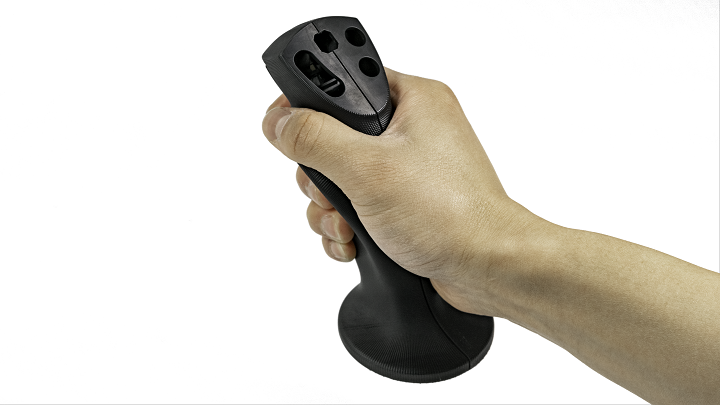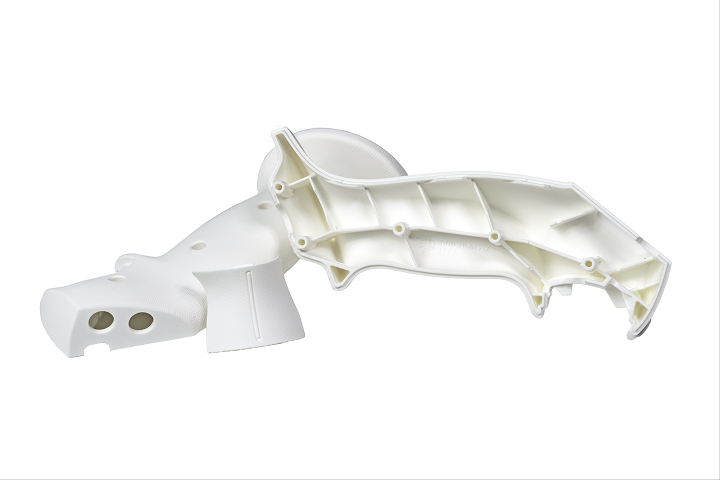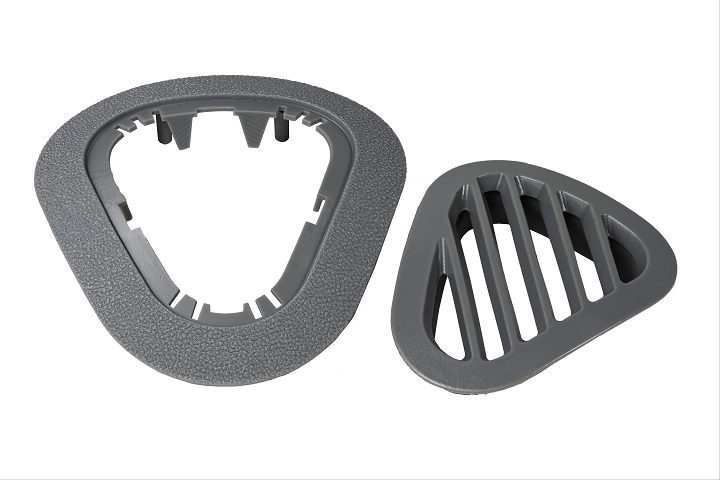There’s been a lot of focus recently on the healthcare and bioprinting side of operations for 3D Systems (NYSE:DDD), what with its acquisitions of Allevi and Additive Works and the fact that its 7.7% revenue growth at the end of Q1 21 was mostly driven by healthcare sales. But the company, which just this week announced the sale of its on-demand 3D printing service bureau business for $82 million, has also been continuing to beef up its materials portfolio, and just introduced four new high-performance resins—meant for advanced production applications—for its modular Figure 4 technology.
The company’s Figure 4 digital manufacturing solution has been used for a variety of advanced applications already, such as hearing aids and aircraft maintenance. When compared to those made with AM technologies like FDM and powder binding, 3D Systems says that parts 3D printed on its Figure 4 resemble injection-molded plastics right off the print bed, with smooth surfaces and no visible build lines, which means less post-finishing to complete. These latest production-ready Figure 4 materials, designed specifically for prototyping and batch-run, end-use part manufacturing, are said to feature long-term stability and mechanical performance in both indoor and outdoor environments, making them well-suited for more complex applications in the automotive and motorsports, aerospace and defense, consumer electronics, healthcare, and industrial goods industries.
“Our customers lead their industries in innovation, and they are turning to us for support with increasingly complex applications. We’re not only partnering with our customers to help them design the optimal solution to meet their application challenges, but in many cases, we are also developing new materials that deliver the unique mechanical properties required,” Dr. Edwin Hortelano, 3D Systems’ Senior Vice President for Materials Engineering and Development, said in a press release. “Our materials scientists created these latest enhancements for our Figure 4 portfolio to help our customers produce parts that not only enhance performance but improve productivity. The combination of materials, 3D printing technology, software, and deep applications expertise allows 3D Systems to deliver industry-leading additive manufacturing solutions that accelerate time-to-market and enable competitive advantage.”

Rigid, flame-retardant consumer electronics and aerospace housings printed in Figure 4 High Temp 150C FR Black, for long-lasting production parts requiring UL94 V0, FAR 25.853, and FAR 23.853 ratings.
The first new material is the novel Figure 4 High Temp 150C FR Black, a halogen-free, rigid, fire retardant resin that’s UL94 V0 rated at 2 mm or 3 mm thickness for electrical components and printed circuit board housings and covers. As it’s also compliant with US Federal Aviation Regulation (FAR) 25.853 and FAR Part 23.853 at a 3 mm thickness, this resin is a good choice for production parts for consumer electronics, automotive and motorsports, and aerospace and defense applications, such as panels and small in-cabin parts for commuter and transport aircraft.
Said to be easy to handle, and used as-is without having to melt or print it at high temperatures, 3D Systems says that parts made with its new Figure 4 High Temp 150C FR Black resin, in addition to offering high mechanical performance, have tested to the equivalent of “eight years indoor and one and a half years in outdoor environments per ASTM D4329 and ASTM G194 methods.” With this level of environmental stability, parts printed with this material should be stable and functional for long periods of time in environments both indoors and outdoors.

Structural, load-bearing consumer goods/electronics joystick printed in Figure 4 Tough 65C Black, for production parts that remain functional and environmentally stable for years.
The next two materials, similar to ABS, were also meant for long-term indoor and outdoor use, with higher than average environmental stability and mechanical performance. Figure 4 Tough 65C Black and Figure 4 Tough 60C White are, according to 3D Systems, meant for high load-bearing production applications, with their “combination of impact strength, elongation, and tensile strength.” With a 6.6% elongation at yield, the Figure 4 Tough 65C resin is said to offer better clips and snaps, making it a good choice for things like custom fasteners, brackets, snap fits, covers, and structural parts. It’s also UL94 HB rated for flammability and biocompatible-capable per ISO 10993-5.

Tough, production-capable handle component for consumer/medical devices printed in Figure 4 Tough 60C White with ISO 10993-5 and ISO 10993-10 biocompatibility ratings and non-fade bright white color.
Figure 4 Tough 60C White performs pretty much like the Tough 65C Black, and is meant to be used with mechanical-load bearing applications like handles, fasteners, brackets, and small snap-fits in wearable devices, consumer products, and general use parts that need high accuracy and details. It’s also biocompatible- capable per ISO 10993-5 and ISO 10993-10, and because it hangs on to its color, cytotoxicity, dimensional stability, and mechanical properties even after sterilization, 3D printing handles, tools, and small plastic parts for medical applications.
The last of 3D Systems’ new resins is Figure 4 Rigid Gray, meant for static production applications like functional prototyping and end-use production parts, such as casings, panels, trim, and rigid housing and covers, due to its “excellent” print quality, thermal and mechanical properties, and—again—long-term indoor and outdoor mechanical performance and environmental stability. Additionally, the color helps make texture, text, and fine details pop, and makes the material a good choice for secondary processes like metal plating and painting.

Rigid, production-capable automotive air-vent printed in Figure 4 Rigid Gray, featuring long-lasting mechanical performance and stability with comparable surface texture to injection molded plastics.
“We are using the Figure 4 Rigid Gray material to rapidly deliver functional parts for our consumer sporting goods lines, including ski helmet accessories, bicycle lighting covers, and sporting shoe soles and components. We are very impressed with the performance of this material and the overall productivity of the Figure 4 solution. Out of the printer, parts display excellent dimensional accuracy and perfect quality, comparable to injection-molded plastics. The attractive grey color of the material is also ideal for highlighting fine surface details and texture-on-part,” said Grégoire Mercusot, a material engineer with previous 3D Systems collaborator Decathlon.
3D Systems plans on making its four new resin materials available for purchase later this month.
(Source/Images: 3D Systems)
Subscribe to Our Email Newsletter
Stay up-to-date on all the latest news from the 3D printing industry and receive information and offers from third party vendors.
You May Also Like
Profiling a Construction 3D Printing Pioneer: US Army Corps of Engineers’ Megan Kreiger
The world of construction 3D printing is still so new that the true experts can probably be counted on two hands. Among them is Megan Kreiger, Portfolio Manager of Additive...
US Army Corps of Engineers Taps Lincoln Electric & Eaton for Largest 3D Printed US Civil Works Part
The Soo Locks sit on the US-Canadian border, enabling maritime travel between Lake Superior and Lake Huron, from which ships can reach the rest of the Great Lakes. Crafts carrying...
Construction 3D Printing CEO Reflects on Being Female in Construction
Natalie Wadley, CEO of ChangeMaker3D, could hear the words of her daughter sitting next to her resounding in her head. “Mum, MUM, you’ve won!” Wadley had just won the prestigious...
1Print to Commercialize 3D Printed Coastal Resilience Solutions
1Print, a company that specializes in deploying additive construction (AC) for infrastructure projects, has entered an agreement with the University of Miami (UM) to accelerate commercialization of the SEAHIVE shoreline...






























